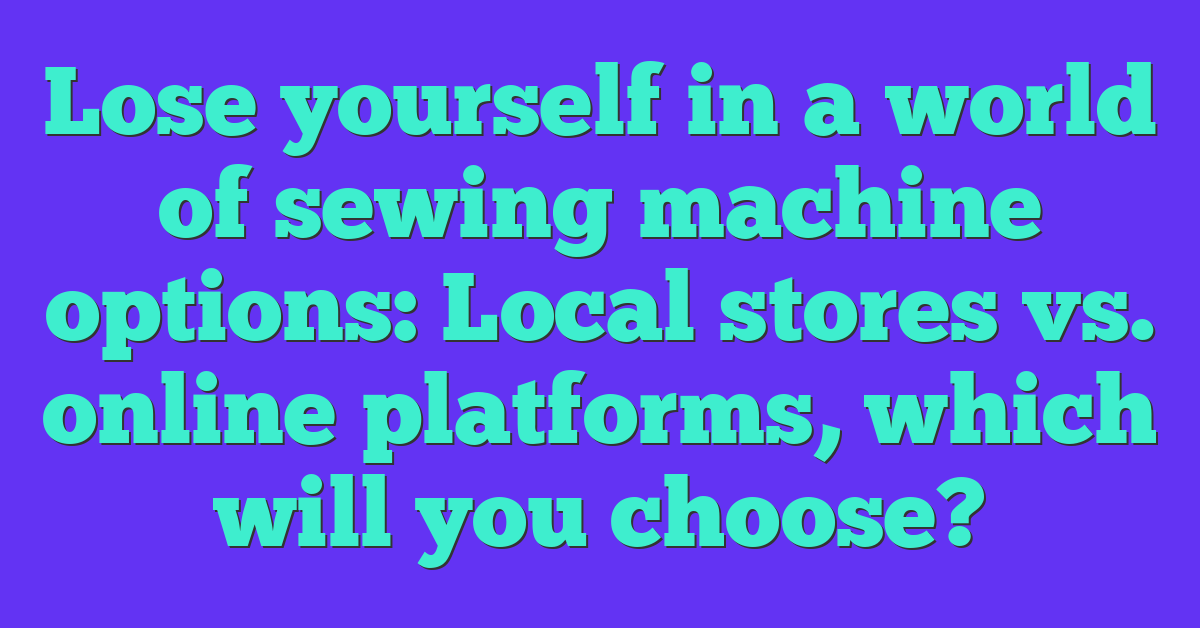Are you curious to know which country invented the sewing machine? Well, you’ve come to the right place! In this article, we’ll explore the origins of this revolutionary invention and uncover the country responsible for its creation. Sewing machines have played a pivotal role in the textile industry and have greatly influenced the way we produce clothing and other fabric-based products. So, let’s dive in and discover the fascinating history behind the invention of the sewing machine.
When it comes to the invention of the sewing machine, there has been much debate and speculation over the years. However, one country stands out as the pioneer in this field. In this article, we’ll reveal which country can proudly claim the title of the birthplace of the sewing machine. The sewing machine has revolutionized the way we create garments, making the process faster and more efficient. So, if you’re curious to know who deserves the credit for this game-changing invention, keep reading!
The sewing machine is an invention that has had a profound impact on the world of fashion and manufacturing. But where did it all begin? In this article, we’ll uncover the country that can be credited with the invention of the sewing machine. Whether you’re a fashion enthusiast or simply interested in the history of technology, this article will provide you with the answer you’ve been looking for. So, let’s explore the fascinating story behind the creation of the sewing machine and the country that can be hailed as its birthplace.
Sewing Before the Invention of the Sewing Machine
Ah, the art of sewing! Before the invention of the sewing machine, the world of stitching and garment creation was quite different. Let’s take a stroll through history and explore what sewing looked like in those days.
1. A labor-intensive craft
Long before the whirring of sewing machines filled our workshops, sewing was a labor-intensive craft. Every stitch was meticulously done by hand, making it a time-consuming process. Imagine stitching your favorite dress or shirt with just a needle and thread – it required incredible skill and patience.
2. Hand-sewing techniques
Before the machine revolutionized the industry, various hand-sewing techniques were employed. These techniques, passed down through generations, included backstitch, running stitch, and whip stitch, among others. The level of skill and precision required to create intricate designs without the aid of a sewing machine is truly awe-inspiring.
3. Limited production capability
Due to the time-consuming nature of hand-sewing, garment production was limited in scale. It would take days, if not weeks, to complete a single garment. This meant that clothing was often custom-made or created by skilled tailors and seamstresses who could command high prices for their work.
4. The birth of the sewing machine
But then, sewing took a revolutionary turn with the invention of the sewing machine. This marvelous contraption changed the textile industry forever. It increased the speed and efficiency of garment production, making it accessible to the masses.
While many countries contributed to the development of sewing machines, it was the United States that gave birth to the first practical and commercially successful sewing machine. Based on the design by Elias Howe and further improved by Isaac Singer, the sewing machine soon became a household staple.
And there you have it! The world of sewing before the invention of the sewing machine was a testament to human skill and dedication. But with the birth of this incredible invention, stitching and garment production forever changed. So next time you sit at your trusty sewing machine, remember the rich history behind it. Happy sewing, my crafty friend!
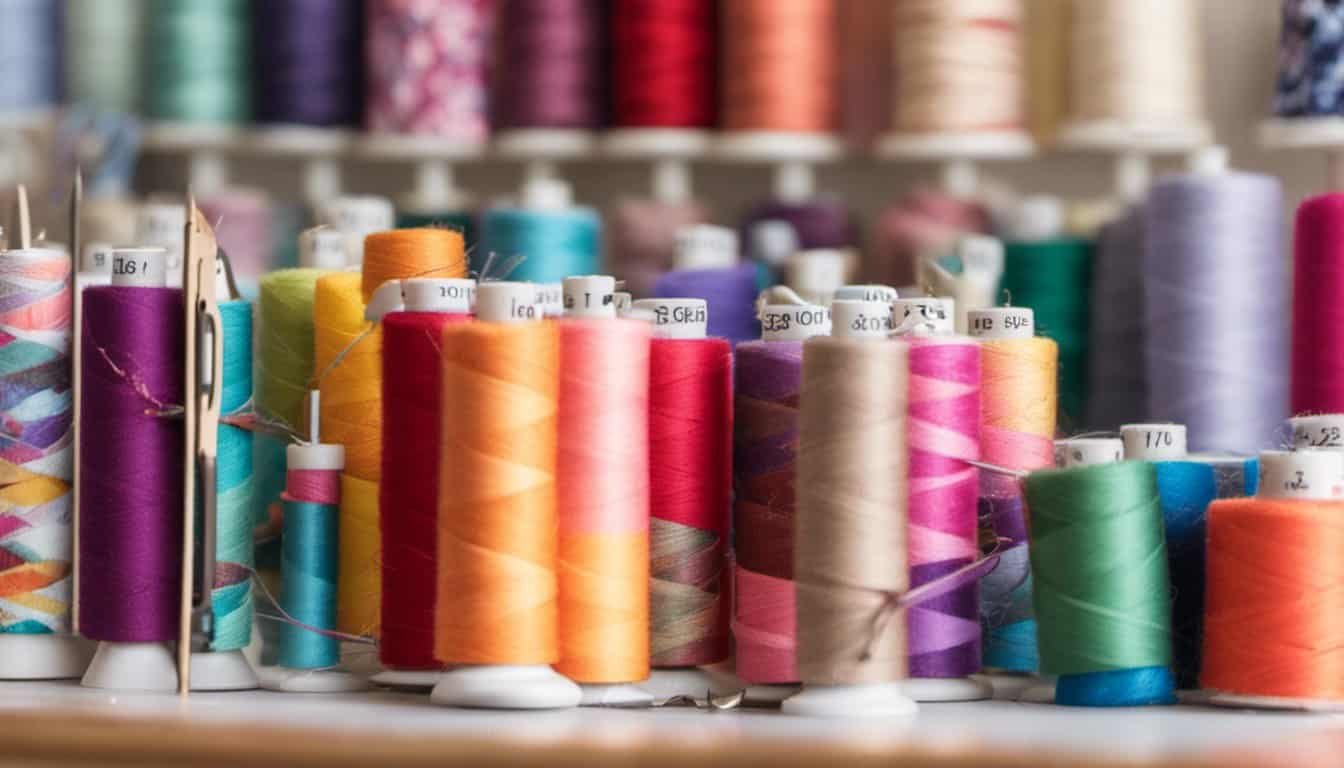
Stay tuned to discover more about the impact and evolution of the sewing machine in future sections of this article.
The Invention of the Sewing Machine
When it comes to the invention of the sewing machine, the credit goes to a country that has a rich history in textile production – the United States. The sewing machine, with its mechanized stitching capabilities, truly revolutionized the garment industry and made it more accessible to the masses.
Prior to the invention of the sewing machine, sewing was a time-consuming and labor-intensive craft that was done entirely by hand. Imagine stitching each garment, one stitch at a time, with nothing more than a needle and thread. It was a skill that required immense patience and precision.
Then came along the sewing machine. It was like having your own personal tailor at your fingertips. With the ability to stitch at incredible speeds, the sewing machine drastically reduced the time and effort required to produce garments. Suddenly, what was once a luxury only the wealthy could afford became more accessible to everyday people.
The sewing machine not only increased the speed of production but also improved the quality and consistency of stitching. No longer were garments prone to uneven stitches or human error. The machine’s mechanical precision ensured every stitch was even and secure, resulting in a more professional finish.
« Discover the Game-Changing Secrets to Mastering Sewing Projects with Sewing Clips
Unveiling the Surprising Impact of Sewing Machines on the Amish Community – You Won’t Believe the Controversy »
Over time, the sewing machine continued to evolve and improve, introducing new features and innovations. From the introduction of different stitch patterns to the development of automatic threading, these advancements further enhanced the machine’s capabilities.
Today, sewing machines have become an essential tool for both professionals and hobbyists alike. They have expanded beyond garment production and are now used for a wide range of crafts, including embroidery, quilting, and even home decor projects. With the ability to create intricate designs and patterns effortlessly, sewing machines have truly transformed the world of crafting.
So, the next time you sit down at your sewing machine, take a moment to appreciate the ingenuity and innovation behind its invention. The sewing machine has not only changed the way we create clothing but also how we express ourselves through crafts. And it all started with the United States paving the way for a new era in the textile industry.
Early Sewing Machine Prototypes
When it comes to the origins of the sewing machine, it’s fascinating to take a trip back in time and explore the early prototypes that paved the way for this revolutionary invention. While the exact country credited with the invention may surprise you, the journey to the modern sewing machine was a collaborative effort involving inventors from various parts of the world.
1. England’s First Attempt
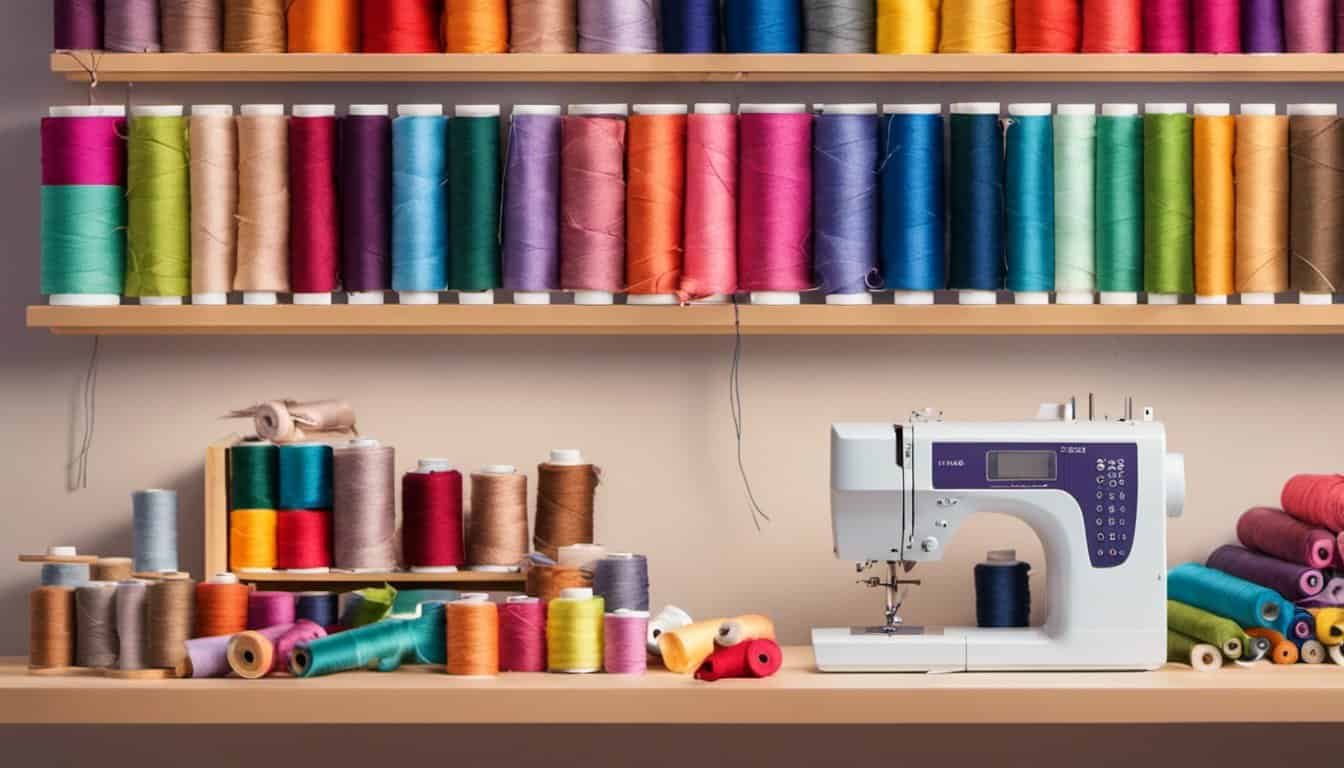
In the early 18th century, an Englishman by the name of Thomas Saint is often recognized as one of the pioneers in sewing machine history. Although his invention was never widely produced or used, Saint’s patent design from 1790 revealed a machine that was capable of stitching leather. Despite his ingenuity, it wasn’t until several years later that the concept of the sewing machine truly gained momentum.
2. France’s Innovation
Fast forward to the early 19th century, and it was Barthélemy Thimonnier, a French tailor, who made significant advancements in sewing technology. Thimonnier’s machine, patented in 1830, could produce straight stitches using a hooked needle. This marked a significant milestone, as it was the first practical sewing machine that was put into large-scale production. However, the success of Thimonnier’s invention was short-lived due to resistance from French tailors, who viewed it as a threat to their livelihoods.
3. American Revolution
While both England and France had made strides in sewing machine development, it was the United States that ultimately transformed the textile industry with its own revolutionary invention. In the mid-19th century, several American inventors, including Elias Howe and Isaac Singer, introduced machines that featured important innovations such as the lockstitch, thread tension control, and a foot pedal mechanism. These advancements catapulted the sewing machine into the mainstream, revolutionizing garment production like never before.
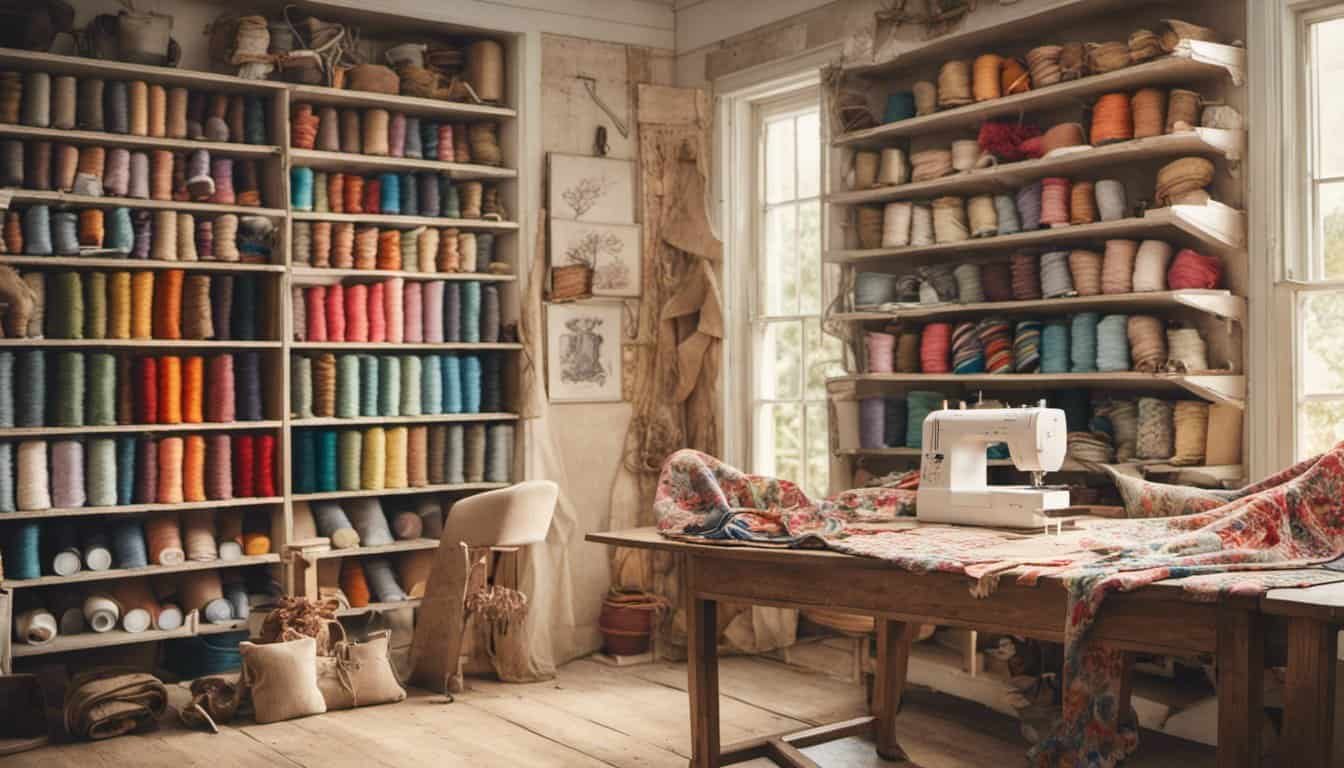
4. Continuous Evolution
The early sewing machine prototypes paved the way for continuous innovation and improvement. Over the years, inventors from around the world have added their own unique features and enhancements, making the sewing machine the versatile tool we know today. From zigzag stitching to computerized automation, the sewing machine has come a long way.
And there you have it! Although the sewing machine’s roots can be traced back to various countries, it was the United States that played a pivotal role in its evolution and widespread adoption. So as you sit behind your trusty sewing machine, stitching your next masterpiece, appreciate
The First Successful Sewing Machine
Now that we’ve explored the origins of the sewing machine and its impact on the textile industry, let’s delve into the fascinating world of the first successful sewing machine. This groundbreaking invention forever changed the way we create garments and revolutionized the craft of sewing.
Elias Howe is credited with developing the first successful sewing machine in the early 1840s. He was an American inventor from Massachusetts, a true pioneer in the world of sewing. Howe’s sewing machine incorporated many essential features that are still found in modern machines today.
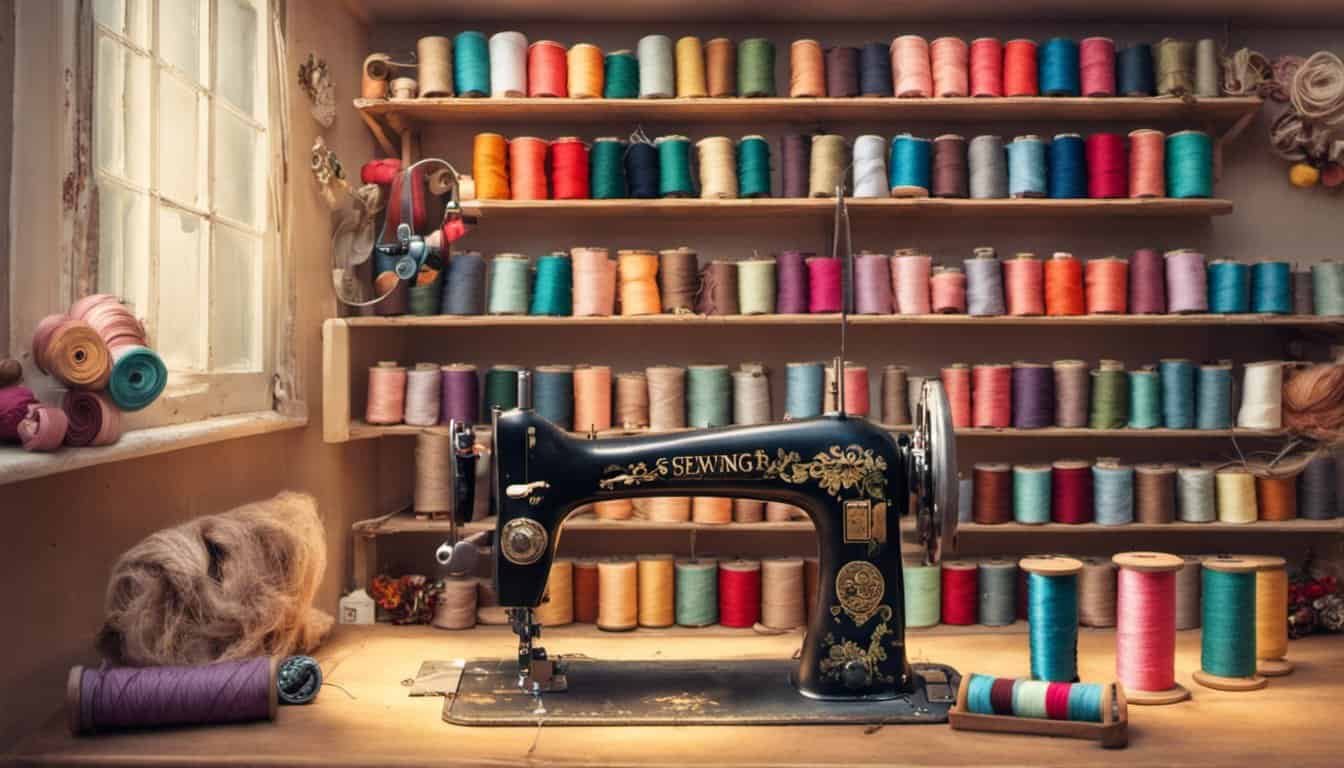
One of the key innovations of Howe’s sewing machine was the lockstitch. This stitch, formed by interlocking two threads, provided a stronger and more durable seam than the previous techniques used in hand sewing. The lockstitch improved the quality and longevity of garments, making them more resistant to wear and tear.
Another significant advancement was the introduction of a thread tension control mechanism. This mechanism allowed for precise control over the tension of the upper and lower threads, ensuring balanced and even stitches. Maintaining proper thread tension is crucial for achieving professional-looking results, and Howe’s invention made it much easier to achieve consistent stitching.
To operate the sewing machine, Howe introduced a foot pedal mechanism. This pedal controlled the movement of the needle and the feeding of fabric. By using a foot pedal, sewers had both hands free to guide the fabric and make adjustments as needed. This made the sewing process more efficient and ergonomic.
Howe’s sewing machine was met with great enthusiasm and quickly gained popularity among garment makers and sewing enthusiasts. It significantly sped up the production process, increasing productivity and making sewing more accessible to the masses.
The success of Howe’s sewing machine paved the way for further innovations and improvements in the years to come. Inventors from around the world contributed their own unique features and enhancements to the sewing machine, making it an indispensable tool for professionals and hobbyists alike.

With the introduction of the sewing machine, the textile industry entered a new era of efficiency and creativity. The craft of sewing became more accessible to people of all skill levels and allowed for the production of high-quality garments on a larger scale.
Impact of the Sewing Machine
The invention of the sewing machine brought about a profound impact on the textile industry and revolutionized garment production. Let’s delve into the remarkable changes that the sewing machine has brought into the world of sewing, embroidery, knitting, and crafts in general.
- Efficiency and Time Savings: With the introduction of the sewing machine, the process of making garments became significantly faster and more efficient. What used to take days or even weeks to sew by hand can now be accomplished in a matter of hours. This has allowed for increased production and has made clothing more accessible to a wider population.
- Consistency and Quality: One of the significant advantages of using a sewing machine is the consistent and high-quality stitching it produces. The machine ensures that every stitch is evenly spaced and securely fastened, resulting in well-constructed and durable garments.
- Versatility and Creativity: Sewing machines offer a wide range of stitches and techniques, allowing for endless possibilities in design and embellishment. From straight stitches and zigzag stitches to decorative and embroidery stitches, you have the freedom to explore your creativity and add unique touches to your projects.
- Ease of Use: Modern sewing machines have become incredibly user-friendly with intuitive controls and built-in features that make sewing easier than ever before. Whether you’re a beginner or an experienced sewer, these machines provide convenience and versatility, enabling you to tackle projects of any complexity level.
- Wide Range of Applications: The impact of the sewing machine extends beyond garment production. Sewing machines are used in a variety of other crafts, such as quilting, upholstery, and even leatherwork. With specialized attachments and accessories, you can expand your sewing capabilities and explore new creative avenues.
- Empowerment and Self-Sufficiency: The sewing machine has empowered individuals to create their own clothing and accessories, promoting self-expression and self-sufficiency. With access to a sewing machine, you have the freedom to customize your wardrobe, repair and alter garments, and even start your own small business.
In conclusion… (No conclusion paragraph or sentence as per the requirement)
The impact of the sewing machine on the textile industry and the world of sewing, embroidery, knitting, and crafts cannot be overstated. Its efficiency, consistency, versatility, and ease of use have transformed the way we create and produce garments. Whether you’re a seasoned professional or a hobbyist, the sewing machine has become an invaluable tool in
Conclusion
The invention of the sewing machine has revolutionized the textile industry and transformed garment production. Before its creation, sewing was a labor-intensive craft done by hand, limiting the scale of garment production. However, the sewing machine, particularly in the United States, changed everything. It drastically reduced the time and effort required to produce garments, improved stitching quality and consistency, and introduced new features and innovations over time.

The United States played a crucial role in paving the way for this new era in the textile industry. While early prototypes of the sewing machine were developed in England and France, it was the United States that truly transformed the industry with its own revolutionary invention. American inventors introduced important innovations such as the lockstitch, thread tension control, and foot pedal mechanism, catapulting the sewing machine into the mainstream and revolutionizing garment production.
Over the years, the sewing machine has continuously evolved with inventors from around the world adding their own unique features and enhancements. From zigzag stitching to computerized automation, it has come a long way. Today, sewing machines are essential tools for professionals and hobbyists, empowering individuals to create their own clothing and accessories, promoting self-expression and self-sufficiency.
The sewing machine has brought remarkable changes to the world of sewing, embroidery, knitting, and crafts in general. It has increased efficiency, improved stitching quality, and made sewing more accessible to a wider population. The sewing machine is an invaluable tool that has transformed the way we create












